Discover Miss Rae's Room Dyslexia Blogs, a comprehensive series dedicated to empowering educators and promoting effective strategies for students with Dyslexia. From different types of Dyslexia and Dyslexia screeners to signs of Dyslexia and evidence-based interventions and accommodations in the general education classroom, explore the infusion of the Science of Reading into instruction, explore school's roles in defining Dyslexia, and learn about best practices for teaching students with Dyslexia. Gain valuable insights and practical guidance to create inclusive and supportive learning environments. Start your journey towards improving outcomes for students with Dyslexia today!
|
11/17/2022 5 Comments Are There Different Types of Dyslexia?
So, what exactly is Dyslexia?
Well, let's start with the most widely accepted definition created in 2002 by the National Institute Of Child Health and Development: "Dyslexia is a specific learning disability that is neurobiological in origin. It is characterized by difficulties with accurate and/or fluent word recognition and by poor spelling and decoding abilities. These difficulties typically result from a deficit in the phonological component of language that is often unexpected in relation to other cognitive abilities and the provision of effective classroom instruction. Secondary consequences may include problems in reading comprehension and reduced reading experience that can impede growth of vocabulary and background knowledge."
So, now that we have the formalities out of the way - let's unpack that!
Dyslexia is an unexpected difficulty in reading. What I mean by unexpected is that Dyslexia is unexpected in relation to the student's cognitive ability, motivation, and exposure to reasonably effective reading instruction. It is highly hereditary in nature. Research actually shows us that there is a 50% chance of diagnosis when a parent or sibling has it. The core weakness in Dyslexia is related to students' accurate and efficient pairing between the sounds in words (phonological processing) and their corresponding letter or letter patterns. This often results in lagging skills in sight word recognition, decoding, overall reading fluency, and can also impact spelling. And then as a result of word reading difficulties, students with dyslexia are exposed to a significantly smaller volume of expository and narrative texts, thereby limiting their development of vocabulary and background knowledge. This is referred to as the Matthew Effect. Students with Dyslexia can also have lagging skills in spoken language and struggle to express themselves clearly or comprehend what others mean when they speak. So now that you know what Dyslexia is, did you know that there are subtypes of Dyslexia?
Distinct groups or subtypes of Dyslexic readers have emerged in a series of research studies conducted over the last twenty years. So researchers have attempted to group commonly observed behaviors into different categories.
The most common subtypes include a Phonological Deficit and a Naming Speed Deficit.
The phonological subtype impacts phonological awareness and decoding, sight word and passage accuracy. This subtype is characterized as below average performance on standardized measures of phonemic awareness and assessments of decoding, sight word and/or passage accuracy. These weaknesses impact accuracy of reading single words and connected text.
The Naming Speed Subtype impacts Rapid Automatized Naming, Decoding Efficiency, Sight Word Efficiency, and Passage Fluency. Naming speed deficits are characterized by below average performance on standardized measures of rapid automatized naming, particularly subtests involving letter naming, and measures of decoding word reading efficiency (i.e. timed measures of sight word recognition and decoding). These weaknesses impact fluency in reading sentences and passages.
The combination of both deficits in some students results in a reading impairment that is more severe than in students with a single deficit. The Double Deficit Subtype includes impairments in both phonological and naming speed subtypes. Students with a double deficit demonstrate below average performance in both areas. These weaknesses impact accuracy of reading single words and connected text and fluency in reading sentences and passages.
Regardless of the subtype, Dyslexia is a neurological disability, but the exact cause is still unclear. Despite this, brain imaging shows differences in the way a Dyslexic brain develops and functions. Specifically, Dyslexic brains have been found to have difficulties in identifying separate speech sounds within a word and/or learning how letters represent those sounds
Dyslexia is not the result of the daily struggle of learning to read, but rather the result of a unique neurological profile. And as a result, the impact of Dyslexia is different for each person. We used to think it was more visual in nature, meaning that the disability could be seen in things like letter reversals, seeing or reading words backwards, or letter confusions, but... Research now shows us that it is not a visual disability, but rather, it is a language-based disability. The "visual" issues that we observe are actually indicative of difficulties with recalling letter symbols for sounds and letter patterns in words. Happy & Healthy Teaching! PEACE, Miss Rae Learn more by following me on Instagram!Related Resources...
References:
Brady, Susan. 2019. “The 2003 IDA definition of dyslexia: A call for changes.†Perspectives on Language and Literacy 45, no. 1: 15-21. Keys to Literacy, Understanding Dyslexia, course Kilpatrick, David A. "Essentials of assessing, preventing, and overcoming reading difficulties." Hoboken, New Jersey : Wiley, 2015. Shaywitz, Sally E., and Bennett A. Shaywitz. 2020. Overcoming Dyslexia: Second Edition, Completely Revised and Updated. New York: Knopf Doubleday Publishing Group.
5 Comments
10/22/2022 0 Comments Can schools diagnose Dyslexia?
Dyslexia is a specific learning disability that impacts a student's ability to learn to read.
Federal guidance endorses the use of the term Dyslexia during evaluation, eligibility determinations, and IEP documents when students meet the criteria as outlined in the most widely accepted definition of Dyslexia. In most states, though, Dyslexia falls under the educational disability category of a Specific Learning Disability. Teams of educators including school psychologists, reading specialists, speech and language pathologists, and special educators can determine if students meet the criteria for Dyslexia (or a Specific Learning Disability) during eligibility testing and/or re-evaluations. So, can schools diagnose Dyslexia?
Well, we are not doctors so we cannot "diagnose" student. BUT we can find students eligible for Special Education services under an educational disability category of a Specific Learning Disability.
And because Federal guidance endorses the use of the term Dyslexia during Special Education evaluations, eligibility determinations, and IEP documents when students meet the criteria as outlined in the most widely accepted definition of Dyslexia, we can say things like... "Based on our evaluation results, the team agrees that the student is demonstrating characteristics of Dyslexia." "The student meets the criteria for Dyslexia based upon the evaluations that were conducted." "When considering the student's scores against the most widely accepted definition of Dyslexia, the Team can conclude that the student meets criteria for Dyslexia."
Happy & Healthy Teaching!
PEACE, Miss Rae Related Resources...9/17/2022 0 Comments What are the signs of Dyslexia?
The indicators of Dyslexia can be easy to identify when you know what to look for in a student! But remember...
these are just a guide!
Each individual student has a unique profile, and testing is required to determine a reading disability.
Happy and Healthy Teaching! PEACE, Rae ​ 10/23/2021 0 Comments Intervention Instruction for DyslexiaWhat do you do when a student struggles to read?
You intervene! A reader who struggles to recognize and understand the letters and sounds in words is a candidate for intervention instruction. When a reader spends too much time trying to recognize letters and then recalling their corresponding, more time is spent on decoding the words than on understanding a text. Since the English language is an alphabetic language, a student must be able to efficiently link sounds to the letters that represent the sounds in text. So when students struggle to do this with automaticity, they struggle to learn to read.. Research shows that for students with learning difficulties, learning is hard. These students do not benefit from more of the same, whether that be instruction or curriculum. What these students do benefit from is expert teaching. The more difficulties students demonstrate when learning to read, the more systematic and direct the instruction should be. 10/15/2021 1 Comment Structured Literacy: A Comprehensive Approach for Teaching Reading to Students with Learning Disabilities
Unlock the potential of structured literacy! Learn about the evidence-based principles and practices that make structured literacy an essential approach for teaching reading to students with learning disabilities. Discover how this systematic, explicit, and diagnostic instruction fosters reading skills and comprehension. Access a helpful checklist for effective implementation and explore renowned structured literacy programs for optimal results.
Structured Literacy is a research-backed best practice approach that empowers students with learning disabilities to develop foundational literacy skills. With its purposeful, direct, systematic, and explicit framework, structured literacy enables students to decode printed words and engage in meaningful reading experiences. By embracing individualized instruction and informed assessments, this approach offers a blueprint for delivering effective and targeted teaching.
Moreover, structured literacy serves as an umbrella term coined by the International Dyslexia Association (IDA) to unify evidence-based programs and approaches aligned with the Knowledge and Practice Standards. While benefiting all students, structured literacy has proven essential for those identified with Specific Learning Disability (SLD)/Dyslexia. Structured literacy is intentional, explicit and direct, systematic, cumulative (scope and sequence), comprehensive, diagnostic, prescriptive, and multi-sensory instruction, incorporating phonology, sound-symbol, syllables, morphology, semantics, and syntax.
This approach has demonstrated success in teaching all students to read and write (Moats, 2019; Young, 2018). In fact, over 60% of students in general education classrooms can benefit from structured literacy-based instruction (Young, 2018).
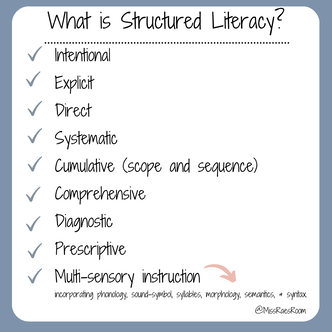
Structured Literacy emphasizes intentional, diagnostic, explicit, and direct instruction that engages students and facilitates progress.
It follows a systematic scope and sequence, gradually introducing language concepts from simpler to more complex, ensuring mastery before advancing. With scaffolded instruction, corrective feedback, and multi-sensory techniques, structured literacy enhances memory and learning by engaging multiple pathways in the brain. This comprehensive approach covers all aspects of language, including phonology, sound-symbol relationships, syllables, morphology, semantics, and syntax.
By integrating these components, students develop a deep understanding of reading and language comprehension.
The power of structured literacy lies in its focus on systematic and explicit instruction in word recognition skills. Research confirms that efficient and automatic word recognition plays a pivotal role in reading comprehension. A structured literacy-based curriculum commences with a strong emphasis on phonemic awareness, enabling students to concentrate on the sounds in words. As students progress, they learn advanced skills while acquiring the rules of the English language through aligned instruction in decoding and encoding. Structured Literacy supports the learning of ALL learners, including those with Dyslexia!
Research supports the effectiveness of structured literacy instruction for students at-risk of literacy difficulties (Gersten et al., 2009). Renowned structured literacy programs like Orton-Gillingham, Wilson Reading System, and Lindamood-Bell have proven effective for students with learning disabilities. For instance, Children’s Dyslexia Centers, Inc. provide structured-literacy instruction (Orton-Gillingham) to students free of charge, resulting in significant improvements among struggling readers with dyslexia markers.
Structured literacy ensures explicit and systematic instruction in sound-spelling patterns and spelling, equipping students to accurately and efficiently decode words. By following a clear scope and sequence that attends to all sounds in each word, students can crack the reading code. Explicit and systematic instruction benefits all students, laying the foundation for successful reading development.
To help ensure that you are providing the necessary instruction and support for your students to become successful readers, consider using THIS checklist.
This checklist can serve as a guide to help you implement Structured Literacy principles and practices in your teaching. It is designed to support you in making sure that your instruction is explicit, systematic, and evidence-based, which are the hallmarks of Structured Literacy instruction.
Structured literacy, grounded in the Science of Reading, is a powerful tool for supporting the learning of all students, including those with Dyslexia. Its explicit and systematic approach addresses the language basis of learning disabilities, covering essential elements such as sound-symbol instruction, semantics, and syntax. By following a logical scope and sequence, students progress from foundational to more challenging skills, ensuring mastery at each step. Evidence consistently confirms that explicit, systematic, cumulative, and multisensory instruction is essential for students who struggle with reading, regardless of their background. Early intervention is particularly beneficial, setting students on the path to proficient reading. Unleash the potential of structured literacy and empower students with learning disabilities to become confident readers. By implementing evidence-based strategies, systematic instruction, and targeted interventions, you can transform the reading experience for every student. Join the structured literacy journey and witness the profound impact it has on students' reading abilities. Happy Teaching! Miss Rae
References:
Gersten, R., Compton, D., Connor, C.M., Dimino, J., Santoro, L., Linan-Thompson, S., & Tilly, W.D. (2009). Assisting students struggling with reading: Response to intervention and multi-tier intervention for reading in the primary grades, a practice guide (NCEE 2009-4045). Washington, DC: National Center for Education Evaluation and Regional Assistance, Institute of Education Sciences, U.S. Department of Education. Retrieved from http://ies.ed.gov/ncee/wwc/publications/practiceguides/. Kilpatrick, D.A. (2015). Essentials of Assessing, Preventing, and Overcoming Reading Difficulties. Moats, L. (2019). Hard Words: What Teachers Don’t Know About Teaching Reading and What to Do About It. Voyager Sopris Learning, 2019 Spring Webinar Series. Voyager 2019. Young, N. (2018). Ladder of reading infographic: structured literacy helps all students. Retrieved from https://dyslexiaida.org/ladder-of-reading-infographic-structured-literacy-helps-all-students/. Snow, C.E., Burns, M.S., & Griffin, P. (eds.) (1998). Preventing reading difficulties in young children. Washington, DC: National Academy Press. Related Blogs...Related Courses...Related Resources...10/9/2021 2 Comments Universal Dyslexia Screeners
Are there more students with dyslexia now than there were previously?
Dyslexia is the most common learning disability in the United States. Dyslexia impacts one in five students, or about 20% of our student population. Experts say that there are not more people with Dyslexia than in previous times; however, there are more students with Dyslexia being appropriately identified. The National Institute of Health has found dyslexia is identifiable from age 5.5 years with 92% accuracy. And The International Dyslexia Association recommends screening every student for Dyslexia. Stats and recommendations like those are partly why many states have introduced Dyslexia laws. These laws include the requirement of public school districts to administer Dyslexia screenings to all students. Currently, Dyslexia screenings are required in 43 U.S. states as of March 2019, according to the National Center on Improving Literacy. Other reasons for this change are due to our increased knowledge of learning disabilities and the science of reading instruction. But what are Dyslexia screeners?
Discover practical strategies and helpful resources for supporting students with Dyslexia in the classroom. Learn about the characteristics of Dyslexia, effective intervention techniques, and supportive accommodations to create an inclusive learning environment that fosters reading success for all students.
Dyslexia affects approximately 20 percent of the United States' population, meaning that one out of every five students in your classroom may have a language-based learning disability. As an educator, understanding Dyslexia and knowing how to support students with this condition is crucial.
However, with appropriate interventions, the majority of students with Dyslexia can become proficient readers. Reading experts estimate that 30 percent of students will learn to read regardless of instruction, while 50 percent will benefit from high-quality Tier One instruction in foundational skills. The remaining 15 percent, including students with Dyslexia, will require additional time and support to reach their reading potential, which necessitates intervention.
Effective interventions for Dyslexic students should be explicit, systematic, and more targeted than general education instruction. They should provide extra time for struggling readers and involve reduced instructional group sizes. Intervention instruction should be comprehensive, individualized based on assessment data, and employ multi-sensory techniques.
While providing direct and systematic intervention instruction, it is essential to simultaneously support Dyslexic students in accessing the Tier One curriculum.
Accommodations play a vital role in removing obstacles that hinder independent access to the curriculum. Audiobooks and recorded materials allow students with Dyslexia to access grade-level reading materials, bridging the gap between their vast vocabulary and decoding challenges. Free resources like local libraries, Bookshare, Storynory, ReadWorks, and NewsELA offer audiobooks and content-based texts for students. Check out a few of these FREE audiobook resources: -your local library -Bookshare is the largest online library of accessible reading materials, created for people with disabilities such as Dyslexia. -Storynory offers free audiobooks for younger students. -ReadWorks and NewsELA provides shorter texts and passages that are content-based.
Implementing classroom accommodations can foster a supportive learning environment for students with Dyslexia:
-Extended or Additional Time -Use Clear Language -Make Learning Multi-Sensory -Use Project Based Learning -Pair Verbals with Visuals -Use Strengths -Allow Extra Time -Give Checklists -Offer Choice Projects -Provide Direct & Explicit Instruction -Praise Effort & Encourage -Chunk Information -Provide Assistive Tech (i.e. Audiobooks, Google Read & Write, Speech to Text) -Implement a Structured Literacy approach to teaching reading Click HERE to learn more about Structured Literacy Instruction for students with Dyslexia. By understanding Dyslexia, providing effective intervention, and implementing supportive accommodations, teachers can bridge the gap between students' reading and intellectual abilities. Dyslexia is a lifelong disability, but with the right support, students can improve their reading skills and achieve success in the classroom. For more in-depth information and resources on addressing Dyslexia in the classroom, visit my blog and empower your students to overcome reading challenges and thrive academically. Happy Teaching! Miss Rae
References:
Kilpatrick, D.A. (2015). Essentials of Assessing, Preventing, and Overcoming Reading Difficulties. Shaywitz SE, Morris R, Shaywitz BA. The education of dyslexic children from childhood to young adulthood. Annu Rev Psychol. 2008;59:451-75. Doi: 10.1146/annurev.psych.59.103006.093633. PMID: 18154503. Simos PG, Fletcher JM, Bergman E, Breier JI, Foorman BR, Castillo EM, Davis RN, Fitzgerald M, Papanicolaou AC. Dyslexia-specific brain activation profile becomes normal following successful remedial training. Neurology. 2002 Apr 23;58(8):1203-13. doi: 10.1212/wnl.58.8.1203. PMID: 11971088. Learn more...Related Resources... |
Proudly powered by Weebly
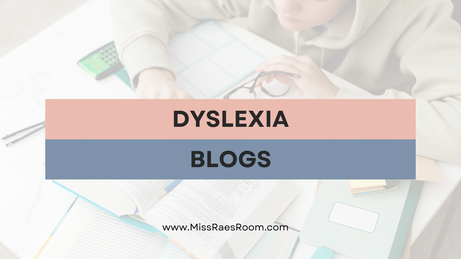
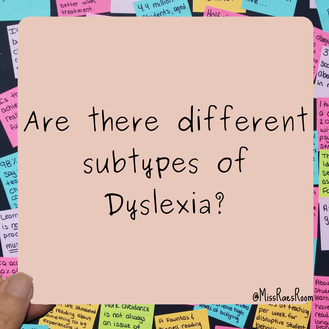
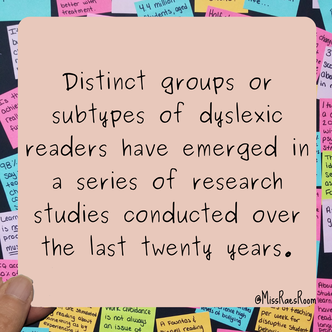
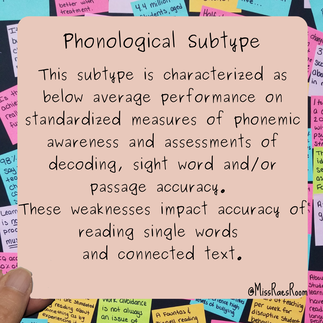
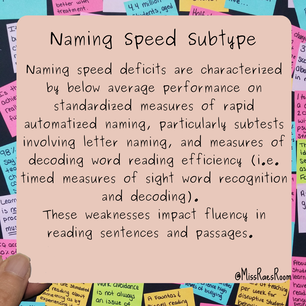
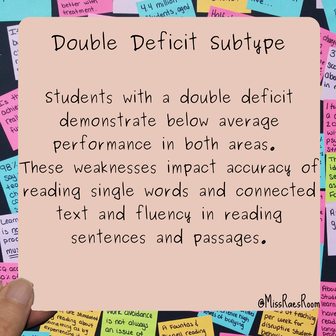


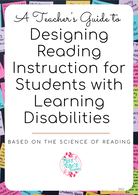
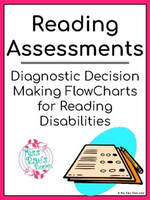
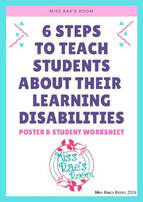
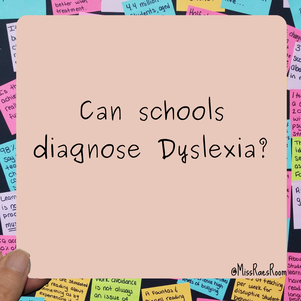
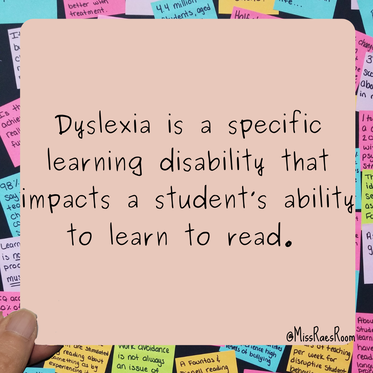
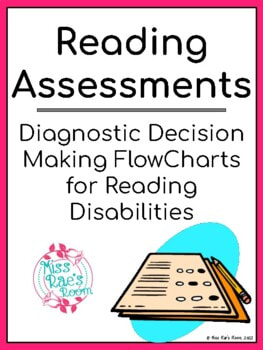
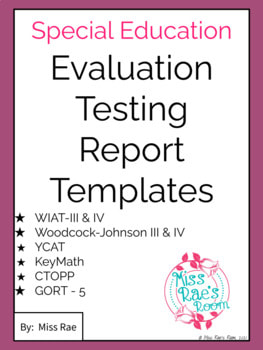
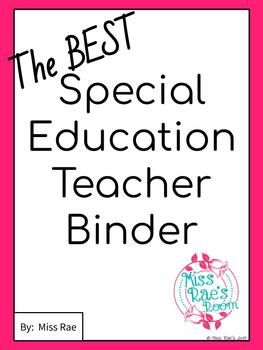
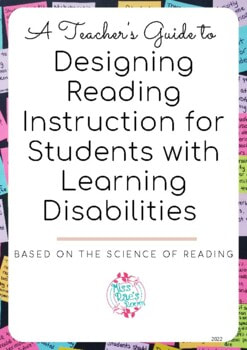
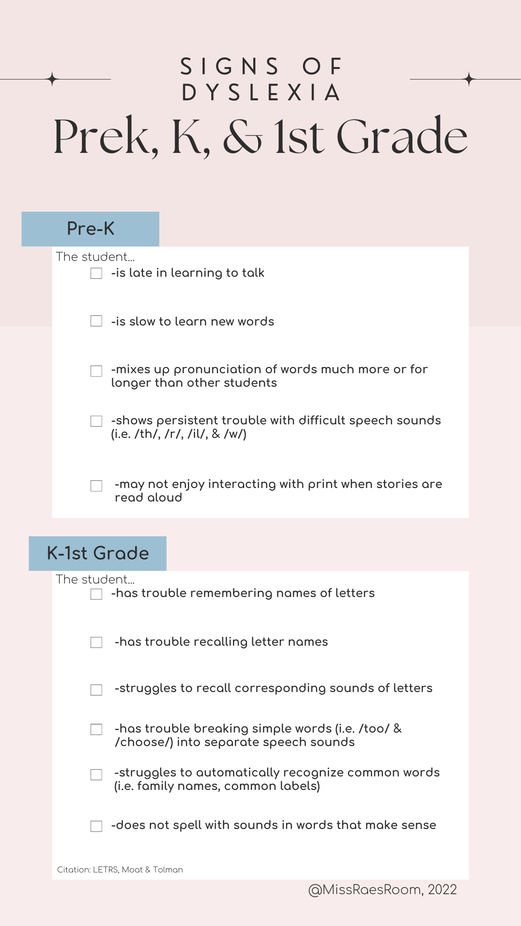
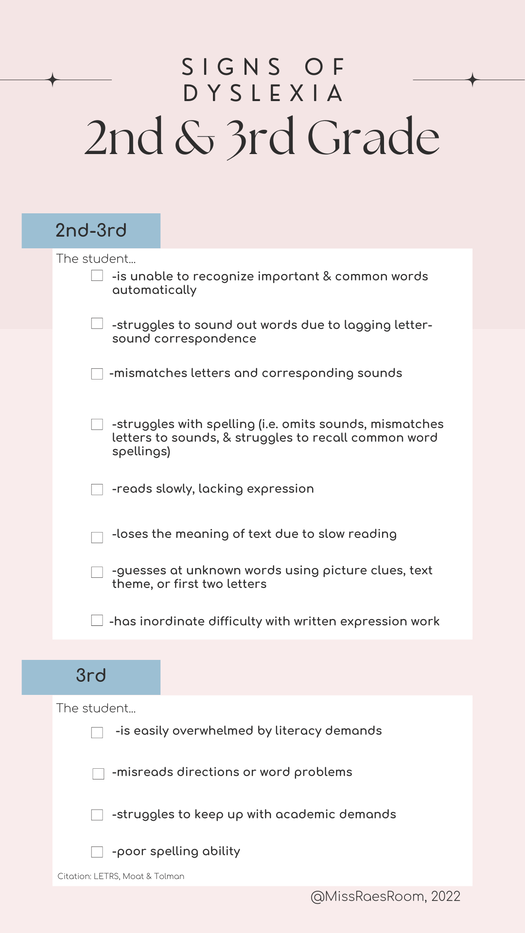
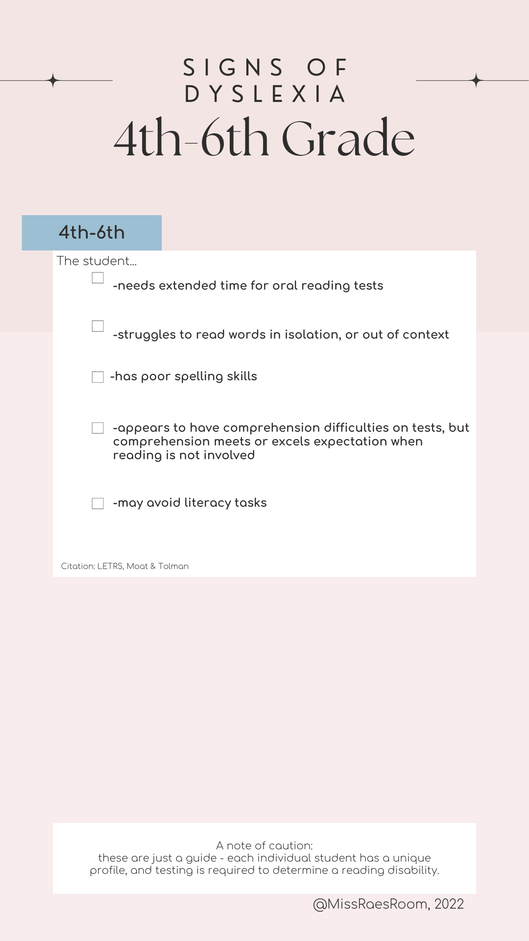
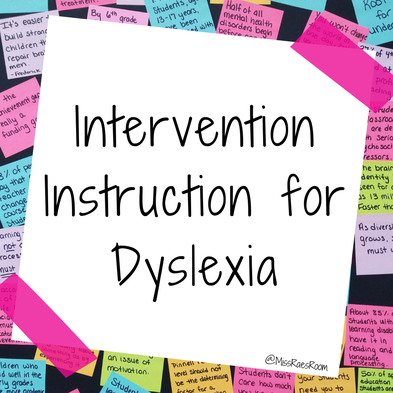
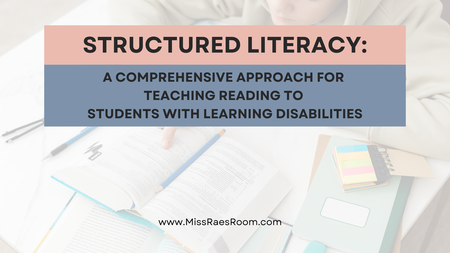
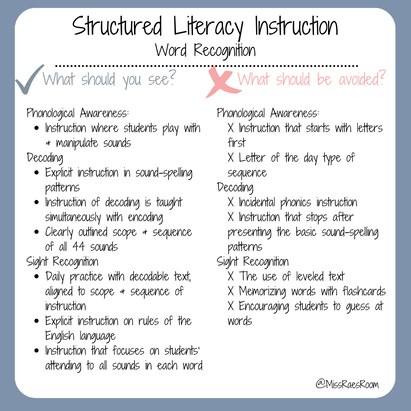
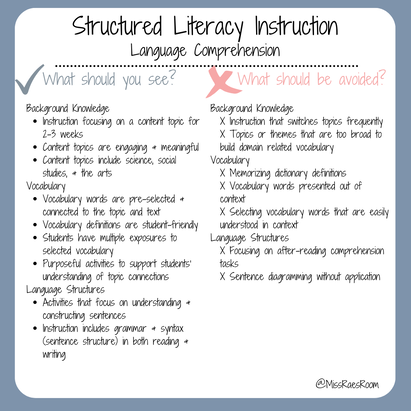
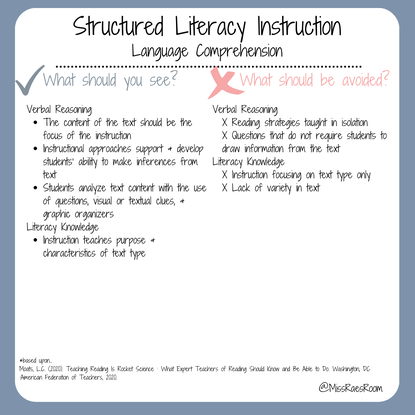
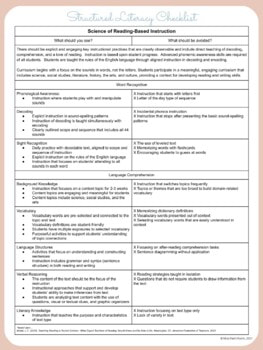
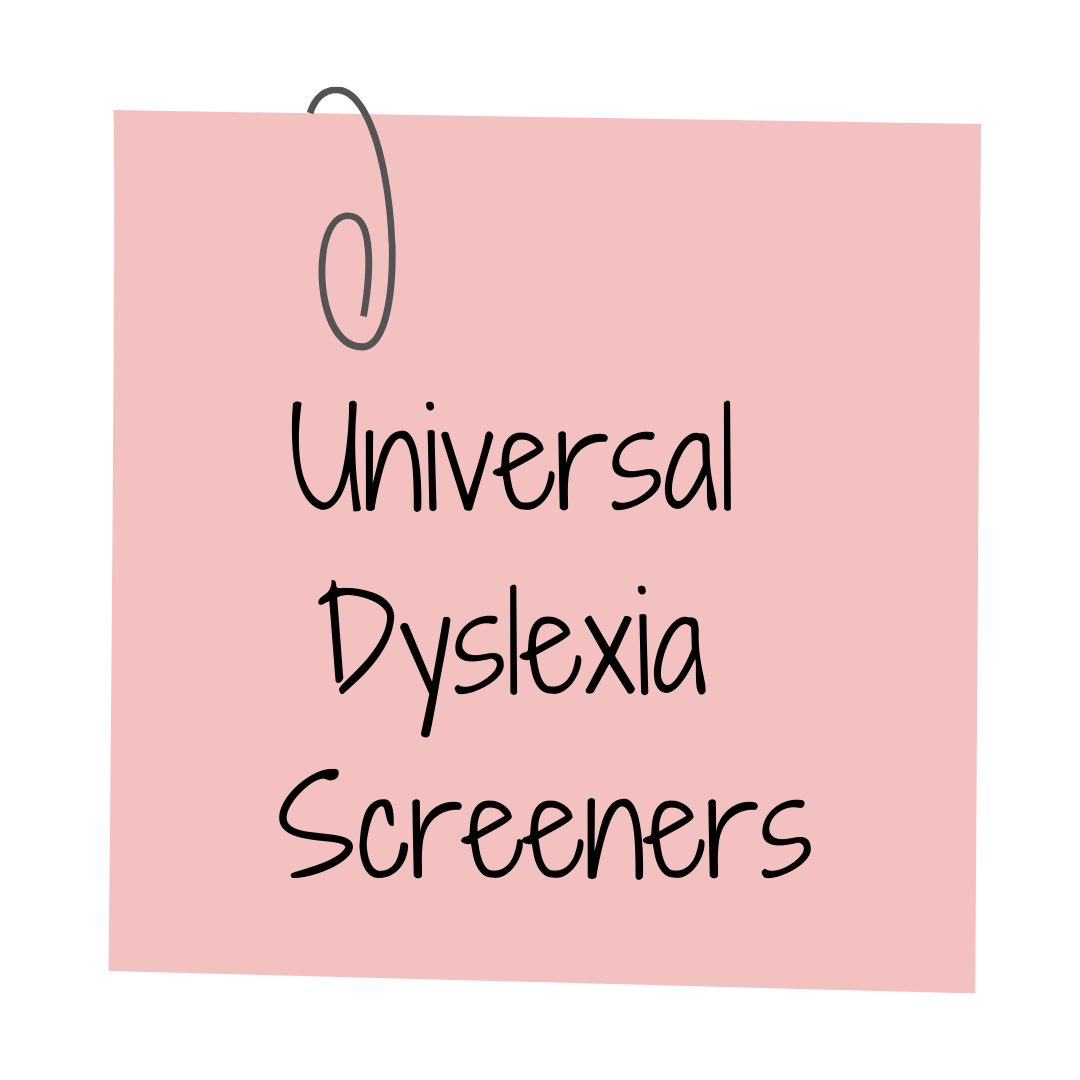
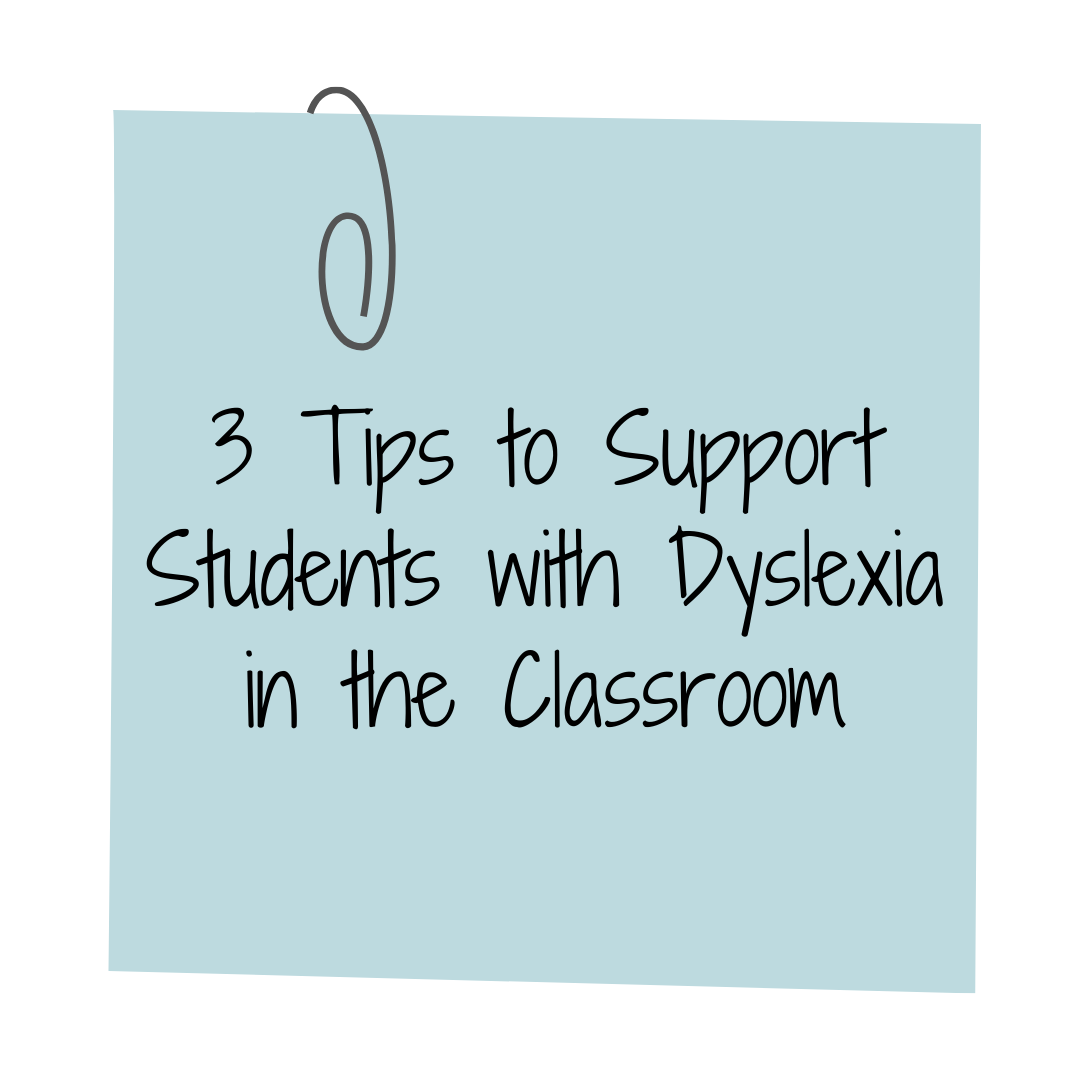
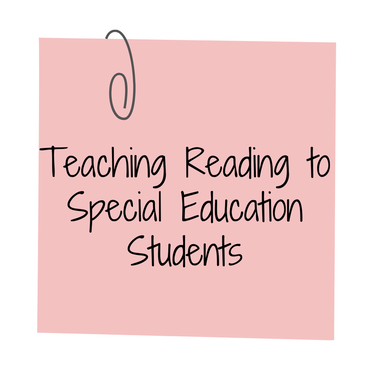
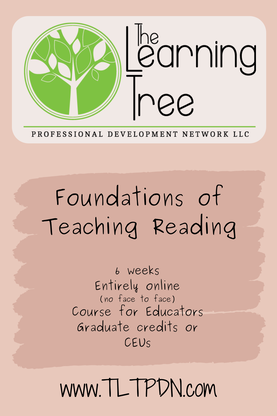
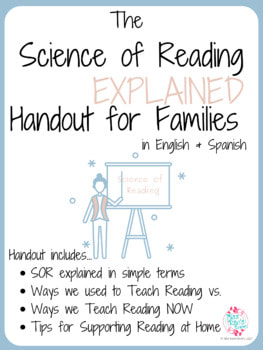
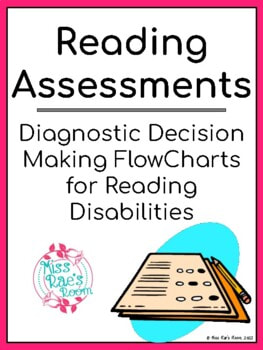
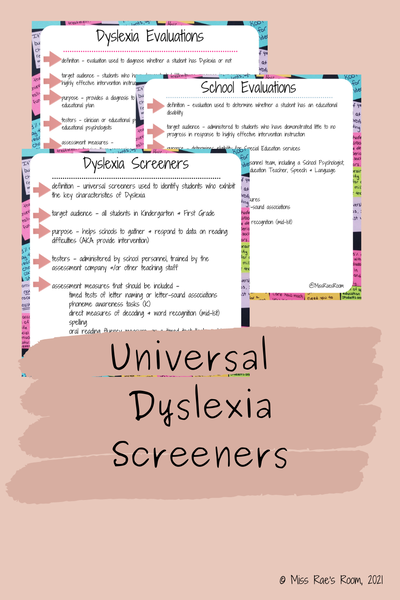
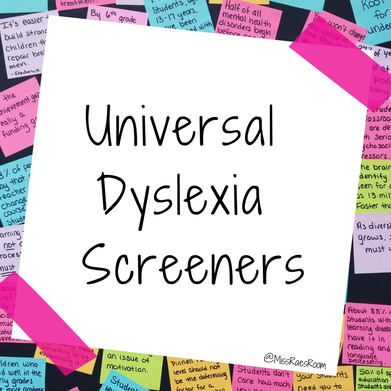
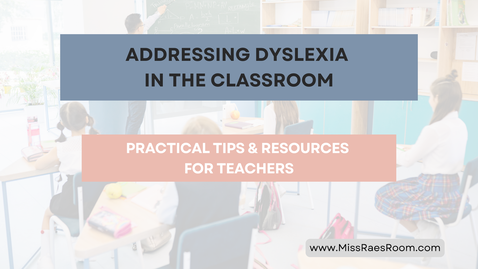
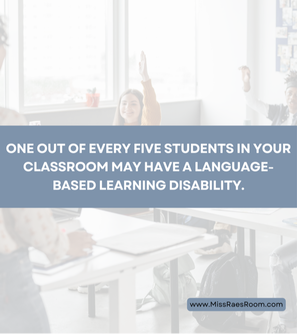
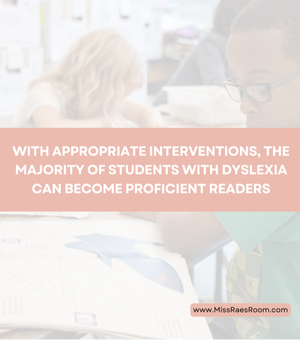
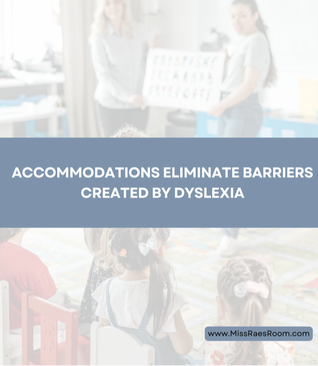
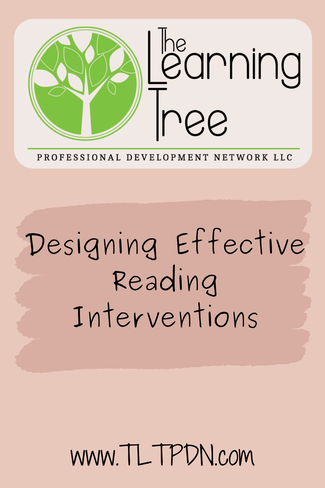



 RSS Feed
RSS Feed